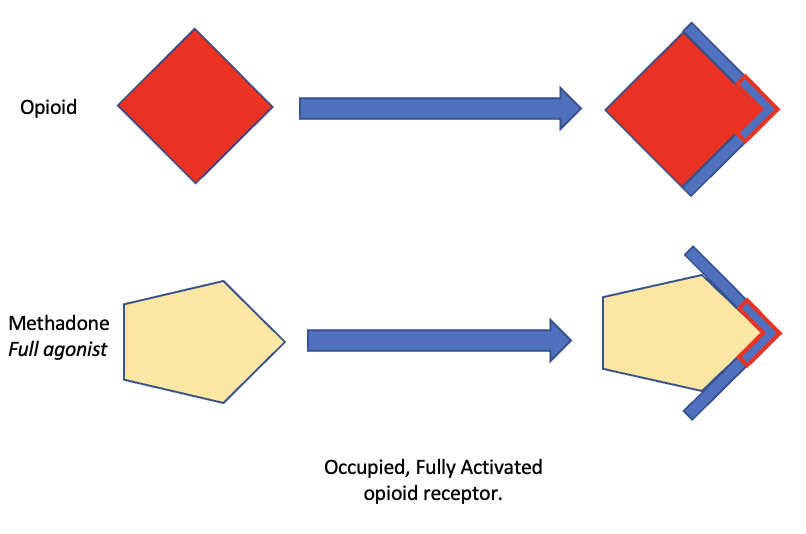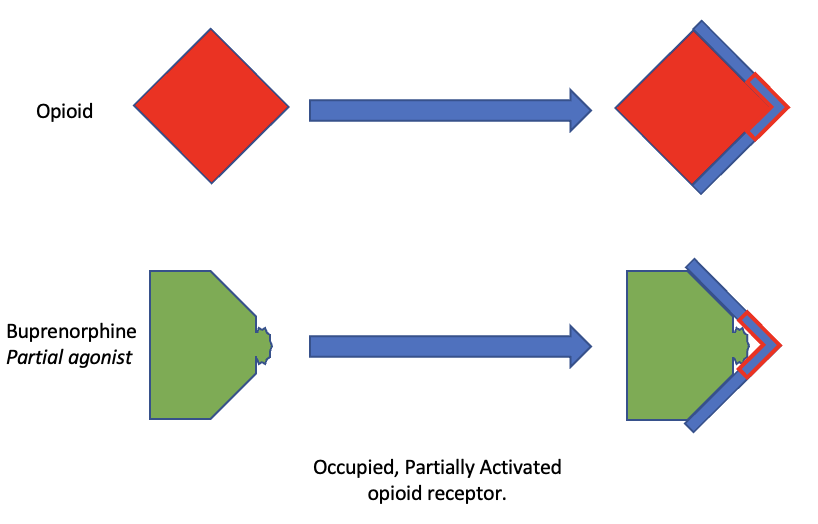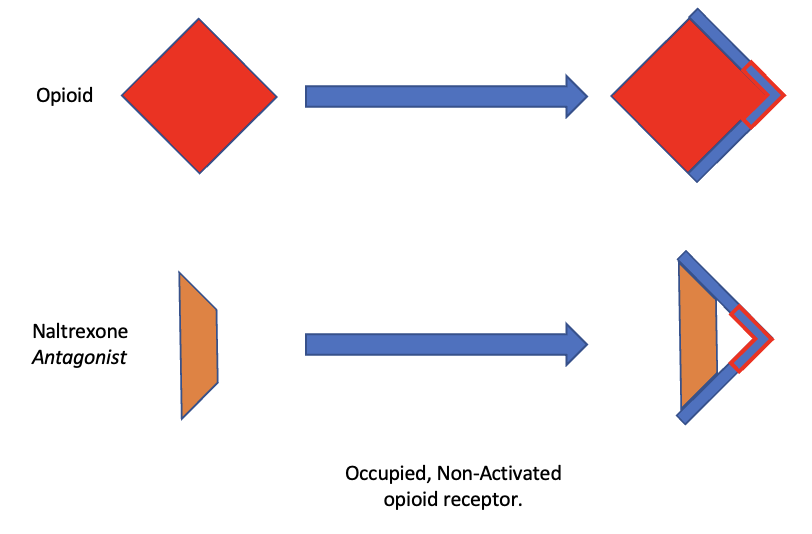
Reasons you might choose medication for OUD
& which medication is best for your patient?
About Opioid Addiction
Opioid addiction is a chronic medical condition, once it develops it remains present whether people are using opioids or not.
Patients with opioid addiction have abnormal function of some brain centers which cause them to have strong, and difficult to resist urges to use opioid drugs.
In people with opioid addiction, stopping opioid use is a first step to improve quality of their life, BUT, most people are unable to resist using opioids without the help of a medication.
Many who go to the hospital to detoxify off opioids and return home without medication relapse within few weeks, and some die of overdose.
There are three medications to help with craving and
the urge to use to prevent relapse:
Methadone
Naltrexone
Buprenorphine
Each of these medications have a different mechanism of action. Your chance of having good medication response is best if you take the medication that fits your personal needs, preferences, and treatment goals.
Taking Medications for Opioid Use Disorders
Benefits of MOUD:
- People relapse because they cannot stop thinking about the drug. With the right medication, craving and intrusive thoughts go away and decisions to abstain from the drug are easier to make
- Medication reduces rate of overdose by half for those who stay on medication
- Medication can be used together with therapy or can be used without it, both strategies are effective
- Medication can help with the recovery effort, they are bridge to long term recovery
- You may not need to remain on medication once you are stable in your recovery.Working with your doctor you can re-evaluate if it is safe to come off the medication.
Be mindful:
- It can take time to get used to the medication, and finding the perfect dose for each patient is a careful titration
- Medication can cause side-effects, some mild but some more severe
- Medications and doctor’s visits can be expensive, insurance options for covering these costs are available and should be factored into the decision making
If you are not sure about being on a medication, TRYING any medication for 1-2 months can help you determine if this treatment method is right for your patient.
Knowing what does not work is just as important as knowing what does work.
Methadone
Benefits
- Considered the “gold standard” in the treatment of opioid addiction, research studies suggest it is the most effective medication
- Methadone strongly activates opioid receptors in the brain (similarly to heroin), and eliminates withdrawal, reduces craving, and acts as a block on opioid receptors which symptoms manifest as preventing the high from heroin/painkillers
- Patients taking methadone either stop using heroin or other opioids, or use much less, they often have fewer medical problems, and have better social and work functioning
Downsides
- Methadone can only be given in a specialized methadone clinic, where you need to go every day at the beginning of treatment to receive the dose and be observed
- Needs to be taken every day and if you miss the dose you may go into withdrawal
- Methadone is a potent medication and can cause sedation and overdose if not taken properly and if mixed with alcohol or sedatives
- Methadone may produce side-effects like nausea, sweating, constipation, sexual problems, and heart problems

Buprenorphine
Benefits
- Works similarly to methadone, aides in eliminating withdrawal and drug craving, but it only partially activates opioid receptors and therefore is safer and has fewer side effects
- Buprenorphine is safer than methadone, and can be prescribed by a doctor or a nurse and taken at home
- Both methadone and buprenorphine will protect you from the overdose, but only if you keep taking the medication every day
- Both methadone and buprenorphine cannot be stopped abruptly, or you will experience withdrawal symptoms
Downsides
- Need to be in withdrawal before taking the first dose
- Occasional side-effects such as nausea, constipation, headache, and drowsiness
- Overdose can occur if buprenorphine is mixed with large amount of sedating medications or alcohol

Naltrexone (injectable)
Benefits
- Naltrexone works differently from methadone or buprenorphine. It completely blocks opioid receptors without activating the receptor
- It can be used only after completing detoxification, or rapid withdrawal will begin
- Naltrexone can decrease your craving for heroin to prevent relapse
- If you use heroin while on naltrexone, it will block heroin effects and will prevent craving for more drugs
- It has no abuse potential, no overdose risk, and there is no withdrawal when it is stopped
- Is available as a monthly injection given at the buttock
Downsides
- You can only receive the first naltrexone injection after you have been fully withdrawn from the opioids (aka detoxified), which can be difficult because of withdrawal symptoms
- It usually takes a week or more from your last dose of heroin to be ready for naltrexone injection, which can be difficult because you may continue having urges to use while waiting
- When you take naltrexone, opioid painkillers will not control your pain, you would need to use different medication/procedures
- Injection of naltrexone can be painful and irritate injection site and it can cause liver problems
- It may take few weeks for people to feel completely well after receiving first injection of naltrexone



